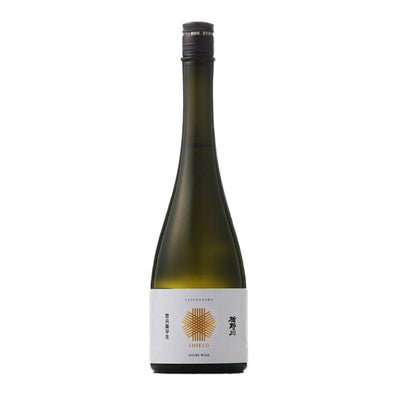The Best Selling Sake of Last Month Was Kizakura Yamahai Jikomi!
Kizakura Yamahai Jikomi 720ml is a remarkable and affordably priced sake, earning its place as a top-selling choice in July. This traditional Japanese sake holds a special position in Japanese restaurants due to its mellow and soft profile, which offers a unique experience with varying characteristics at different temperatures. Rooted in the Yamahai fermentation technique, this sake carries an interesting historical background that traces back to the days of laborious Kimoto brewing. Today, Kizakura Yamahai Jikomi stands as a testament to the rich and pronounced flavors that Yamahai brewing produces.
黄樱山废仕込720ml是一款物美价廉的清酒,成为了7月份最畅销的清酒。这种传统的日本清酒,因其为口感醇厚柔和,可以体验不同的温度下提供具有不同口感,所以在日本餐馆中占有特殊的地位。植根于山废发酵技术,这款清酒有着有趣的历史背景,可以追溯到艰苦的生酛酿造时代。可以说,今天的黄樱山废仕込代表了口感层次丰富而显著山废产品。
Understanding Yamahai Brewing
山废酛理解
In the traditional method of sake production, known as Kimoto, the process involved mashing rice and koji into a puree using wooden oars to expedite the saccharification process. However, this step, known as yamaoroshi, demanded extensive labor during cold winter nights. In 1909, a pioneering researcher, Kinichiro Kagi from the National Institute for Brewing Studies, made a groundbreaking discovery. He found that by slightly raising the temperature and adding a bit more water, the famous oar-mashing step could be bypassed. This revolutionary approach was named "yamaoroshi haishi," later shortened to "yamahai."
在生酛传统清酒生产方法中,制作过程包括使用木桨将大米和曲捣成糊状,以加快糖化过程。然而,这一步骤,被称山卸,需要在寒冷的冬夜大量的劳动。1909年,一位开创性的研究者,来自国立酿造研究所的Kinichiro Kagi,做出了一个突破性的发现。他发现,只要稍微提高温度,再加一点水,就可以绕过著名的搅浆步骤。这种革命性的方法被命名为“山卸废止”,后来缩写为“山废”。

The Evolution to Sokujo Method
演变为速酿酛
Over time, sake production evolved further, leading to the emergence of the sokujo method. This approach involves adding a small amount of lactic acid at the beginning of the brewing process, as opposed to relying on the natural lactic acid bacteria in kimoto and yamahai. While the sokujo method offers a faster and more straightforward brewing process with a cleaner flavor profile, the traditional Yamahai technique produces sake with richer and more pronounced flavors.
随着时间的推移,清酒生产进一步发展,产生了速酿酛。这种方法涉及在酿造过程开始时添加少量乳酸,而不是依赖于生酛和山废酛中的天然乳酸菌。速酿酛供了一个更快、更直接的酿造过程,而且味道更干净,而传统的山海技术生产的清酒味道更丰富、更明显。

The Excellence of Kizakura Yamahai Jikomi
黄樱山废仕込卓越之处
Kizakura Yamahai Jikomi stands out as a best-selling sake for several compelling reasons. By adhering to the time-honored Yamahai brewing technique, this sake exemplifies the artistry and complexity that can be achieved with traditional methods. Its mellow and soft nature allows enthusiasts to explore their palates and savor the nuanced flavors that emerge at various temperatures. Whether served warm or chilled, Kizakura Yamahai Jikomi offers a delightful drinking experience that captures the essence of authentic Japanese sake.
黄樱山废仕込之所以能成为最畅销的清酒,有几个令人信服的原因。秉承历史悠久的山废酿造技术,这款清酒体现了传统方法所能达到的艺术性和复杂性。爱好者们可以探索它的醇厚和柔软的口感,品尝在不同温度下出现的微妙味道。无论是热饮的还是加冰,黄樱山废酒提供了一个愉快的饮酒体验,捕捉到了正宗的日本清酒的精髓。
In conclusion, Kizakura Yamahai Jikomi 720ml showcases the splendor of traditional Yamahai sake brewing. With its distinctive flavors and affordably attractive price, it has rightfully earned its place as a top-selling choice in July!
综上所述,黄樱山废仕込720ml展示了传统山废清酒酿造的辉煌。凭借其独特的口味和实惠的价格,它理所当然地赢得了7月份最畅销的清酒哦!
















コメントを残す